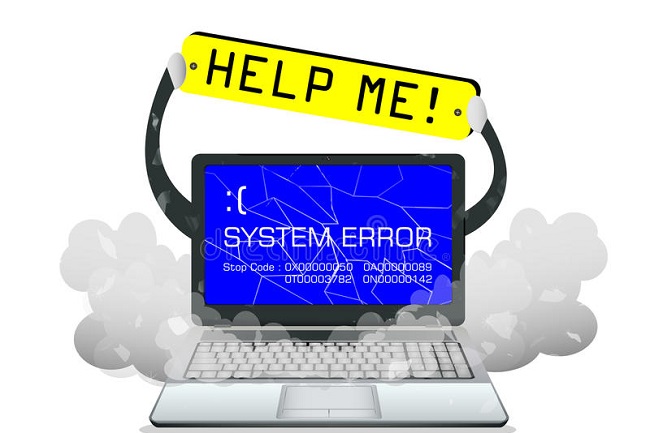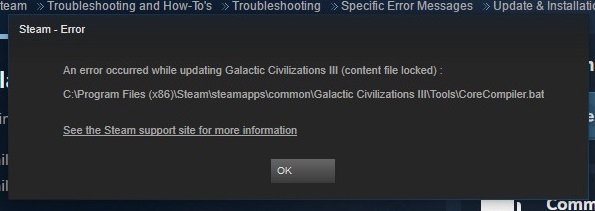The Blue Screen of Death Error (BSOD) is another name for the Critical Process Died Error, which occurs frequently when working on Windows and interrupts your work.
The most frustrating problem you may experience while working on it is BSoDs, commonly known as stop errors or stop codes.
Critical Process Died error in Windows 10 can be caused by a variety of factors, including software defects, bad memory, overheating and over-locking, power supply issues, and so on.
If you’ve ever had a Critical Process Died error on your computer, you’re probably aware that when this happens, your computer’s screen becomes blue and displays the following messages:

Your computer had a problem and needs to be restarted. We’re gathering some error information before restarting for you. If you want to learn more, look up the error Critical Process Died later on the internet.
Read Also:
- 0XC00D36C4
- Service Registration Is Missing Or Corrupt
- The File Is Too Large For The Destination File System
Contents
What is the Critical Process Died Error in Windows 10?
The “Critical Process Died” error is a critical system error in Windows 10 that forces your computer to crash and display a blue screen with the error message.
This error indicates that a crucial system process has unexpectedly terminated, which can result in data loss and instability. It is a serious issue that needs immediate attention to prevent further damage to your system.
What Causes a Critical Process to Die Error?
As previously stated, there are a variety of common/technical causes that finally lead to this mistake. However, the following are the most obvious causes of this error:
- We may say that Buggy Drivers are the leading cause of this issue.
- Damaged files/documents and faulty hard discs.
- Corrupt Windows Registry, as well asbad RAM.
- I’m updating my windows from anolder version to a newer version.
- Miscellaneous concerns such as power supply problems, RAM overheating, hardware or software defects, and so on.
The more you look into this problem, the more intricate it becomes, and it becomes difficult to find the exact cause.
However, regardless of the cause, there are various techniques to solve this error, and in this post, we’ll go over a few of them that will undoubtedly help you fix this mistake on your PC.
How Do I Fix Windows 10’s Critical Process Died Error?
1. Remove
As previously said, some software bugs may be the cause of this issue; therefore, if you have recently installed any software updates on your PC, it may be infected or corrupted by a virus.
Uninstalling such corrupted or infected software will, in the end, resolve the problem:
Step 1: Turn on your computer and go to the settings menu.
Step 2: Select the “Update History” option from the “Windows Update” menu in the PC’s settings.
Step 3: Select Uninstall Updates from the update history window.
Step 4: After that, you’ll see a list of all the updates; select the updates you want to uninstall > then click Uninstall.
Step 5: Finally, launch the app that was causing the error to see if it has been resolved.
2. Disable Sleep Mode and Hibernate in Windows 10 to fix the Bad Pool Header Error
The methods below will assist you in performing this method:
Step 1: To begin, turn on your computer and then go to the Control Panel.
Step 2: Once inside your computer’s control panel, type Power Options and click on it.
Step 3: From the power options menu, select “modify what the power button does” > “Change settings that are currently unavailable.”
Step 4: You’ll be redirected to a new window where you can uncheck Sleep and Hibernate and save your changes.
Step 5: Restart your computer to see if the problem has been resolved.
3. Use the System File Checker
If the error is caused by corrupted or missing files, you can repair it by running a System File Checker on your computer. It will scan your computer and, if any problems are discovered, it will automatically repair them.
To try this method, follow the instructions below:
Step 1: Go to the Start Menu and put “cmd” into the search box.
Step 2: Right-click on the Command Prompt and select Run as Administrator from the options that appear.
Step 3: You’ll be sent to a new window, where you’ll type “sfc /scannow” and press the enter key.
Step 4: After you press the enter key, the process will take some time to complete.
Step 5: Finally, restart your computer and check to see if the error has been resolved.
4. Use DISM
The acronym DISM refers for Deployment Image Servicing and Management, and it will assist you in resolving this issue if you follow the instructions below:
Step 1: Go to the start menu and type “cmd” in the search field, then choose Command Prompt and then Run as Administrator.
Step 2: After that, input the following commands one at a time, pressing the enter key after each one:
Dism /Online /Cleanup-Image/CheckHealth Dism /Online /Cleanup-Image /ScanHealth Dism /Online /Cleanup-Image /RestoreHealth Dism /Online /Cleanup-Image /RestoreHealth
Step 3: Wait a few moments for the scan to finish, then restart your computer.
5. Use CCleaner and Malwarebytes
To use this method, first download and install CCleaner, then simply follow the steps below:
Step 1: Download and install “CCleaner” and “Malwarebytes” first.
Step 2: Next, use Malwarebytes to scan your computer system for any corrupted files.
Step 3: Malwarebytes will scan your PC’s operating system for any suspected corrupted files or infections.
Step 4: Next, open CCleaner and select all of the items you wish to remove from your PC’s Operating System > click Run CCleaner.
Step 5: Wait a few moments for the procedure to finish, then go to the Registry Tab and check all of the options.
Step 6: Then, using CCleaner, run a scan on your PC by selecting Scan for Issues > Fix Selected Issues.
A dialogue will display after that; select Yes to back up your data.
Step 7: After backing up your data, select Fix All Selected Issues > Restart your computer.
6. Safe Mode
It will assist you by employing the bare minimum of drivers and start-up programmes, which will further assist you in resolving the issue by minimising any software struggle/or problem.
The methods below will assist you in performing this method:
Steps to a Clean Computer Boot
Step 1: Turn on your computer and go to the Run menu > type msconfig into the run box and press Enter.
Step 2: On your computer screen, click on Hide all Microsoft services > select “Disable for all” from the drop-down menu.
Step 3: Next, go to the Start-up tab and choose and click the Open Task Manager option.
Step 4: Once inside the Start-up window, click on Task Manager, then (select) Each item, and finally click on the Disable option.
Step 5: Finally, exit Task Manager and restart your computer.
Entering Safe Mode: A Step-by-Step Guide
Step 1: After a few attempts at booting, a list of three booting options will appear on your screen.
Step 2: Next, select Advanced Options from the Troubleshoot menu.
Step 3: After that, go to Advanced Options > Startup Settings.
Step 4: Finally, restart your computer and choose Enable Safe Mode from the menu.
7. Restore Your Computer’s Operating System
If the previous ways do not work for you, you can try this method. Restoring your system will assist you in resolving this issue by deleting any apps or programmes you have recently installed if they are the source of the problem.
I’ll also assist you by allowing you to restore your system’s prior performance. To try this method, follow the instructions below:
Step 1: Turn on your computer and go to the settings.
Step 2: Select Update and Security from the computer’s settings.
Step 3: You’ll be sent to a new window where you may choose the Recovery option (it will be in the left pane).
Step 4: Next, select the option to back up your files under the Get Started option with Reset the PC option.
Step 5: Finally, follow the on-screen instructions to complete the reset procedure.
8. Install the Most Up-to-Date Drivers
The most convenient way to fix Critical Process Died or Critical Process Died Problem or the BSoD error is to update your computer’s driver. Keeping your computer’s drivers up to date can also aid in the resolution of other software-related difficulties.
Follow these steps to get the most recent drivers:
Step 1: Press the Windows + X key combination to open Device Manager.
Step 2: If you locate any driver with a yellow exclamation point beside it, you will be redirected to a new window with a list of drivers. Then uninstall and then reinstall that driver.
Step 3: Next, right-click on the driver and select Upgrade Software from the drop-down menu.
9. Check for Errors on Your Hard Drive
You may use command prompt to check your disc for faults, which can be done by following these steps:
Step 1: Press the Windows key, then type “cmd” into the search box. Select command prompt from the options that display.
Step 2: Right-click the Command Prompt and choose Run as Administrator > Login as Administrator from the menu that appears.
Step 3: Type the following command in the command prompt window:
/f /r /x Chkdsk C
Step 4: f stands for “fix the problem,” r for “repair,” and x stands for “force the volume.”
Reinstalling or refreshing Windows 10 is the tenth method.
Finally, if no other method/or cure works to resolve the Critical Process Died problem, you can reinstall your computer’s operating system. Make a backup of your data on a USB device or hard disc before reinstalling Windows.
Refreshing Your Windows: A Step-by-Step Guide
Step 1: Turn on your computer and navigate to the settings menu.
Step 2: Select the Update and Recovery option after clicking on the Change PC settings option.
Step 3: Finally, click OK to finish the process.
Anyway, if you decide to reinstall Windows, make a backup of your data and then format the C disc on your PC.
Read Also:
Conclusion
So, we’ve reached the conclusion of this essay, and the strategies stated above are among the most practical and simple to implement solutions. To fix the Critical Process Died problem in Windows 10, you can try each of them at your leisure.
Always remember to carefully follow each step to avoid any more complications, and don’t worry if the Critical Process Died error persists after attempting one method; if one doesn’t work, try another.



